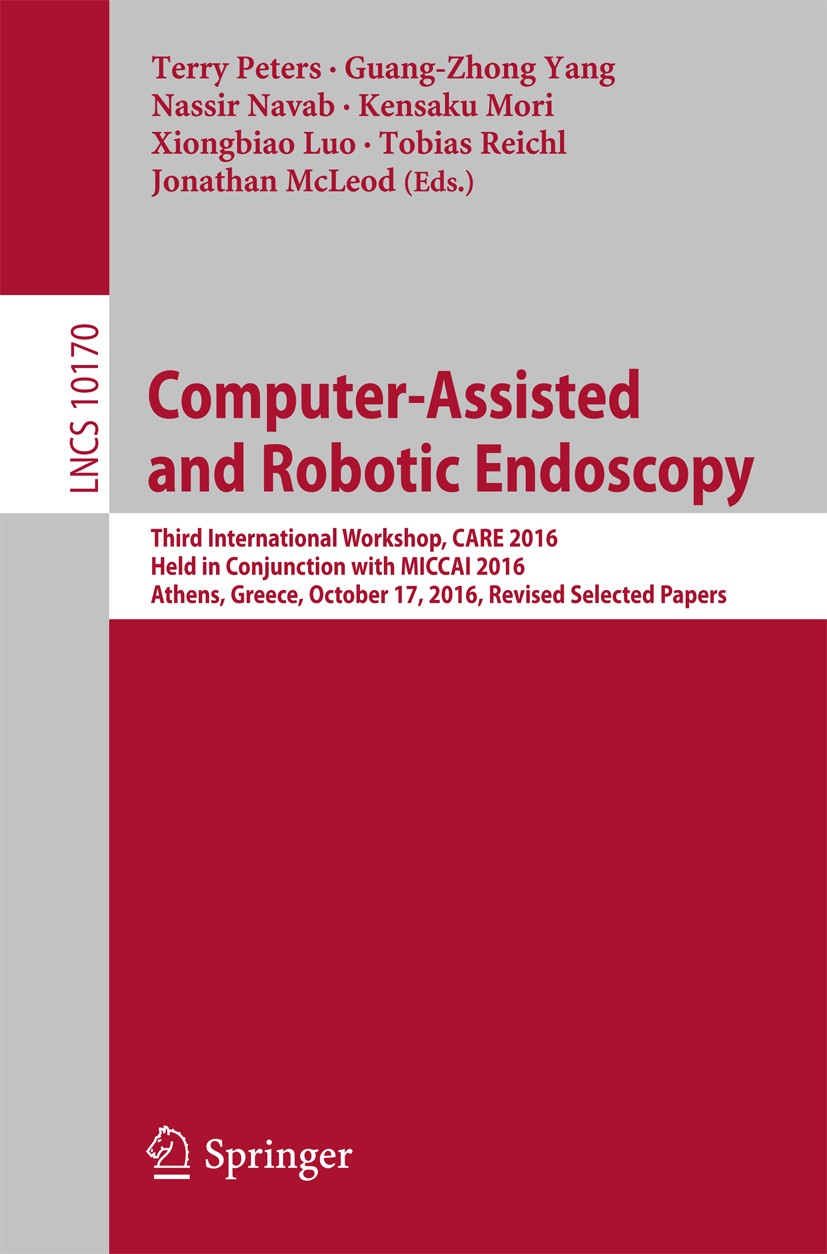| 书目名称 | Computer-Assisted and Robotic Endoscopy |
| 副标题 | Third International |
| 编辑 | Terry Peters,Guang-Zhong Yang,Jonathan McLeod |
| 视频video | http://file.papertrans.cn/235/234468/234468.mp4 |
| 概述 | Includes supplementary material: |
| 丛书名称 | Lecture Notes in Computer Science |
| 图书封面 |  |
| 描述 | .This book constitutes the thoroughly refereed post-conference proceedings of the Third International Workshop on Computer Assisted and Robotic Endoscopy, CARE 2016, held in conjunction with MICCAI 2016, in Athens, Greece, in October 2016.. .The 11 revised full papers were carefully selected out of 13 initial submissions. The papers are organized on topical secttion such as computer vision, graphics, robotics, medical imaging, external tracking systems, medical device controls systems, information processing techniques, endoscopy planning and simulation.. |
| 出版日期 | Conference proceedings 2017 |
| 关键词 | augmented reality; automated diagnosis; computer vision; medical imaging; surgical tracking and navigati |
| 版次 | 1 |
| doi | https://doi.org/10.1007/978-3-319-54057-3 |
| isbn_softcover | 978-3-319-54056-6 |
| isbn_ebook | 978-3-319-54057-3Series ISSN 0302-9743 Series E-ISSN 1611-3349 |
| issn_series | 0302-9743 |
| copyright | Springer International Publishing AG 2017 |
 |Archiver|手机版|小黑屋|
派博传思国际
( 京公网安备110108008328)
GMT+8, 2025-11-12 10:30
|Archiver|手机版|小黑屋|
派博传思国际
( 京公网安备110108008328)
GMT+8, 2025-11-12 10:30


